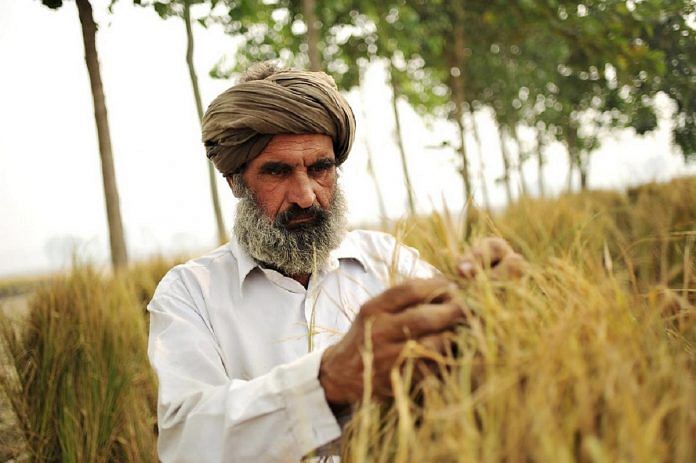
Farm crisis in poll-bound states of Karnataka, MP and Rajasthan, had made BJP jittery, especially after it suffered reverses in rural Gujarat in 2017 polls.
New Delhi: The meteorological department’s forecast that the country will receive a “normal” monsoon this year is seen as a major respite for the BJP-led central government ahead of the 2019 Lok Sabha polls, especially in the backdrop of the agrarian distress.
According to India Meteorological Department’s early forecast released Monday, a “normal” southwest monsoon is expected this year as the seasonal rainfall is likely to be 97 per cent of the long period average with a model error of plus/minus 5 per cent. This makes it the third consecutive normal monsoon for the country.
“We feel that there is very less probability of deficit monsoon to be experienced by India during monsoon season of 2018,” said IMD director general K.J. Ramesh.
According to private forecaster, Skymet, the southwest monsoon in 2018 is likely to be normal at 100 per cent of the long period average (LPA) of 887 mm from June to September.
A monsoon is termed normal if India gets a 96-104 per cent of the LPA while a deficient monsoon means less than 90 per cent. The probability of a normal monsoon is 42 per cent whereas the probability of a below normal monsoon is 30 per cent, IMD said.
Farm sector to get a boost
A normal monsoon augurs well for the agricultural sector as it is heavily monsoon dependent. Such a monsoon will, thus, have a positive impact on agricultural growth which, in turn, will help spur GDP growth.
“From the government’s perspective, it is driven by the fact that we are in the election year, so the focus of the government will be to remain on the agricultural and the rural sector,” said Teresa John, economist at Nirmal Bang Institutional Equities.
“On top of that, if we have a good monsoon, it essentially will mean a double boost for the government. So, a good monsoon and increased government spending will augur well for the agricultural and rural sector,” John added.
Political significance
The favourable monsoon prediction comes in the backdrop of a politically and electorally critical year with important state elections due this year. While Karnataka goes to polls next month, elections will be held in Rajasthan, Madhya Pradesh and Chhattisgarh towards the end of the year.
Farm crises in various parts of the country, including in the poll-bound states of Karnataka, Madhya Pradesh and Rajasthan, had made the BJP jittery, particularly after it suffered reverses in rural areas of Gujarat in the December elections. The Modi government’s last full budget, presented in February, thus, was high on rural spending and made the farm/rural sector its priority.
“While making the proposals in this year’s budget, we have been guided by our mission to especially strengthen agriculture, rural development, health, education, employment, MSME and infrastructure sectors of Indian economy,” finance minister Arun Jaitley had said in his budget speech.
“As my proposals outlined indicate, the focus of the government next year will be on providing maximum livelihood opportunities in the rural areas by spending more on livelihood, agriculture and allied activities…In the year 2018-19, for creation of livelihood and infrastructure in rural areas, the total amount to be spent by the ministries will be Rs 14.34 lakh crore,” Jaitley added.
The budget made it clear that the BJP-led government, much like other governments in election years, would enhance spending to focus on the electorally significant rural constituency. The BJP had wrested a chunk of this constituency from the Congress in the 2014 Lok Sabha elections.
‘A positive sign for economic growth’
Economists say given other constraints, a normal monsoon will be a “positive sign for economic growth”.
“In the present scenario, our external sector is not performing very well because our exports are declining and they have failed to rise to attractive levels so if agriculture does well then it will be a positive sign for economic growth,” said Radhika Pandey, economist at the National Institute of Public Finance and Policy (NIPFP).
“There are some supply-side shortages so a normal monsoon means inflation will come down. Specially, rainfall has a bearing on food inflation so now the supply constraints will be deleted,” Pandey explained.
“So, it will have a favourable impact on inflation management. RBI’s difficulty, specially, on food inflation will get mitigated,” she added.
The regional breakup of the monsoon and monthly distribution will be updated by the IMD in June. Last year, the IMD had forecast a 98 per cent LPA and in 2016 the forecast was 97 per cent.

COMMENTS